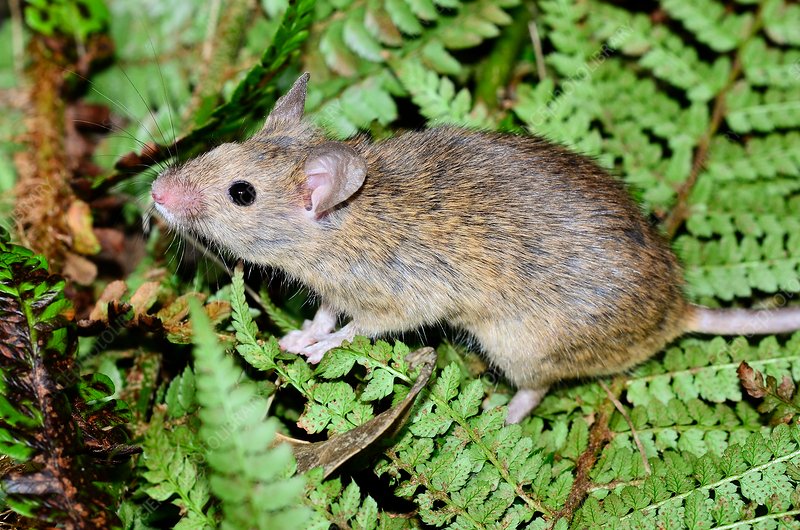House Mouse
This is the common house mouse. They are characterized by a pointed snout, large round ears, and a long hairy tail. They are one of the most abundant species of mice, and can be found in the wild or in cities.
Basic Information
Genetics and Reproduction
Females can bear from 3-14 young (average 6-8), they can breed throughout the year. Mice in the wild don't reproduce in the colder months. Pups are born blind and without fur or ears, they are weaned in about 3 weeks.
Females are sexually mature in about 6 weeks, and males at 8 weeks, but both can copulate as early as 5 weeks. They can be either monogamous or polygamous, most commonly the latter. Polygamous pairings tend to produce healthier offspring and larger litter sizes. This seems to be a result of reproductive competition.
Ecology and Habitats
Any temperate land. They prefer to live in areas that have suitable (safe) hiding places near food and water.
Dietary Needs and Habits
Mice are omnivores and opportunistic eaters. They eat many kinds of plant matter, such as seeds, fleshy roots, leaves, and stems. Insects (beetle larvae, caterpillars, and cockroaches), meat (carrion) may be taken when available. Near humanoid habitation, they will consume any food that is accessible as well as glue, soap, and other household material.
Additional Information
Geographic Origin and Distribution
Any temperate land.
In the wild, they will either dig their own tunnel system, appropriately abandoned burrows or live in cracks in rocks or walls. When living near humanoid habitation, they tend to nest behind rafters, in woodpiles, storage areas, or any hidden spot near a source of food.
Perception and Sensory Capabilities
Lowlight vision, tremorsense (sense air vibration) and scent. These mice can produce and decipher pheromone markers from other individuals. Mice can sense surfaces and air movements with their whiskers. If mice are born blind from birth, super-normal growth of the vibrissae (whisker sensors) occurs presumably as a compensatory response, or if the vibrissae are absent, the use of vision is intensified.
Remove these ads. Join the Worldbuilders Guild



Comments